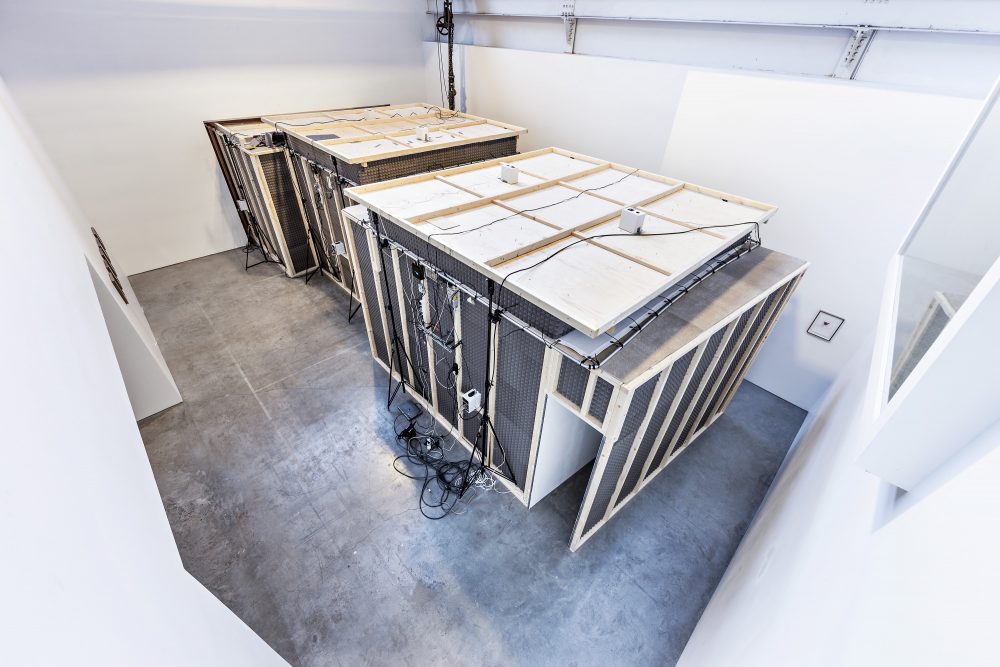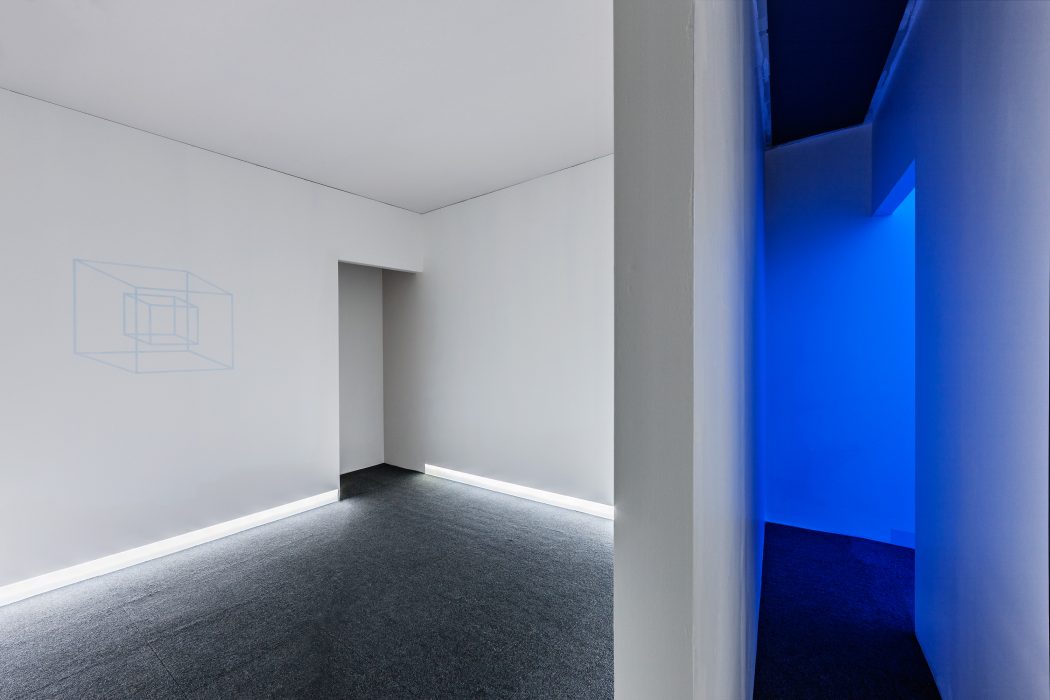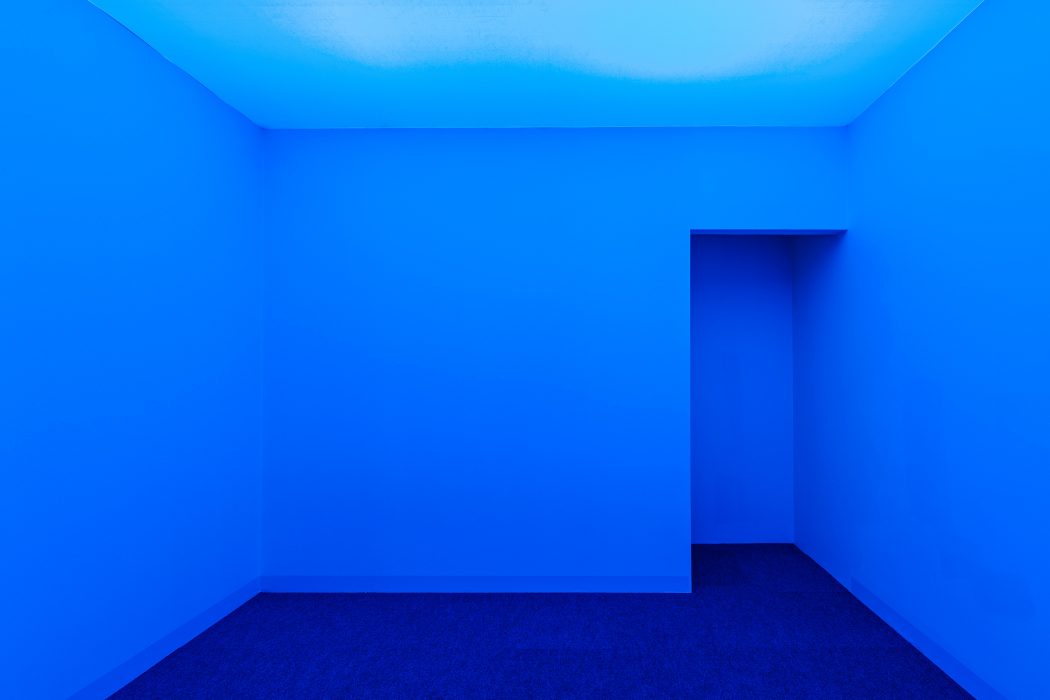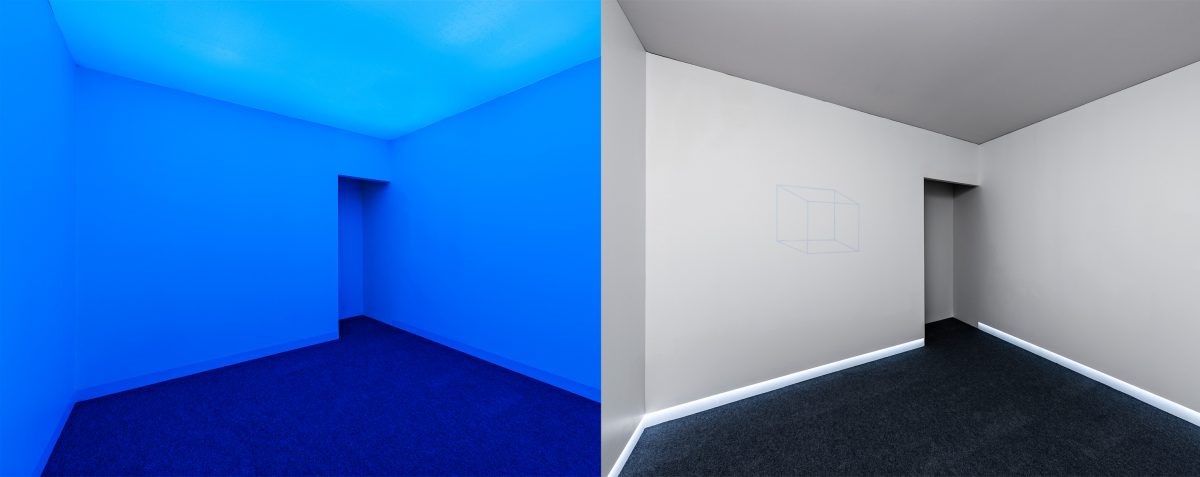The installation Teleportation Paradigm is a collaboration with neuroscientist Karel Jezek, Kavli Institute for Systems neuroscience, NTNU, and is based on a laboratory experiment designed by Jezek.
The light installation consists of three identically built rooms that the audience may enter in a specific order. The design is a greatly enlarged version of the laboratory experiment «teleportation paradigm» that Jezek and his colleagues performed on rats in order to study the brains’ memory of place. In the installation Jezek’s experiment is inflated to human size, and the audience enter the same situation as the rats.
As you enter a new room, the place cells in your brain create and save a spatial memory. A “map” of the room takes shape. When you step outside, it is put aside, but if you return, it will be retrieved. The findings in Jezek’s original experiment suggests that the experiment created a situation of spatial confusion caused by the place cells for one specific place to fire when actually being in another. These results were interpreted as being akin to the experience of waking up in a room not knowing where you are or for a short time believing you are somewhere quite different. With the installation, scientific results are not sought for. Rather, it brings the laboratory experiment back to human experience.
Entering the installation, the viewer first spend time in room 1, then enters room 2 through a narrow corridor, and ends at room 3 through another narrow corridor. The rooms are of equal shape and size, but the light settings are different. Room 1 and 2 have static light settings. After spending time in these two rooms, different “maps” of the rooms are “stored”. Room 3 is programmed to switch between the exact same settings as in room 1 and 2. Thus, room 3 will either be identical to room 1 or 2 upon entering the room, and the spatial memory of the identical room will be retrieved – until the light setting switch, and the memory of the other room is retrieved. It is this moment, as you are “teleported”, which is of interest to the researchers: The transition between two memories. This transition may be experienced as a spatial disorientation.
Murals of a classic optical illusion, the Necker cube, are painted in all rooms. The murals are visible or invisible according to the light setting. Information about the how the experiment works is placed at the exit of the gallery in order for the audience to have a minimum of knowledge and expectations in advance.
Architecture: Richard Øiestad
Light: Richard Øiestad and Hans Christian Skovholt
Sound: Håvard Pedersen / BEK – Bergen Center for Electronic Arts
Technicians: Snorre Hvamen, Ilker Dursun and Aleksander Stav
Produced with support from UKS, Kavli Institute for Systems Neuroscience, Arts Council Norway and NBK/Vederlagsfondet.
-

Teleportation Paradigm, room number 1. Installation view, UKS, Oslo, Norway.
-

Teleportation Paradigm, room number 1 and corridor to room number 2.
-

Teleportation Paradigm, room number 2.
-

Teleportation Paradigm, room number 2 and corridor to room number 3.
-

Teleportation Paradigm, room number 3, with light setting alternating between the same as in room 1 and 2.
-

Teleportation Paradigm, map of the installation. Entrance through room 1, exit through room 3.






